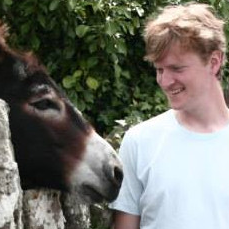Readme
This model uses CodeLlama 7B-instruct with Llama.cpp grammars to generate equations that create plasma shader effects. Refer to the source code for the full grammar and prompt.
To see the plasma in action, you can either use this interactive viewer or ShaderToy.
With ShaderToy you can tweak the colors and everything else. Take the generated effect() function and replace the effect() function in the snippet below. Then copy the whole code snippet into https://www.shadertoy.com/new and hit ▶Compile.
float resolution = 3.0;
float speed = 0.1;
int depth = 4;
vec3 color1 = vec3(235.0/255.0, 231.0/255.0, 92.0/255.0);
vec3 color2 = vec3(223.0/255.0, 72.0/255.0, 67.0/255.0);
vec3 color3 = vec3(235.0/255.0, 64.0/255.0, 240.0/255.0);
// Replace this with the generated effect() function
vec2 effect(vec2 p, float i, float time) {
return vec2(cos(i * sin(p.x * p.y) + time), sin(length(p.y - p.x) * i + time));
}
void mainImage(out vec4 fragColor, in vec2 fragCoord) {
vec2 p = (2.0 * gl_FragCoord.xy - iResolution.xy) / max(iResolution.x, iResolution.y);
p *= float(resolution);
for (int i = 1; i < depth; i++) {
float fi = float(i);
p += effect(p, fi, iTime * float(speed));
}
vec3 col = mix(mix(color1, color2, 1.0-sin(p.x)), color3, cos(p.y+p.x));
fragColor = vec4(col, 1.0);
}
